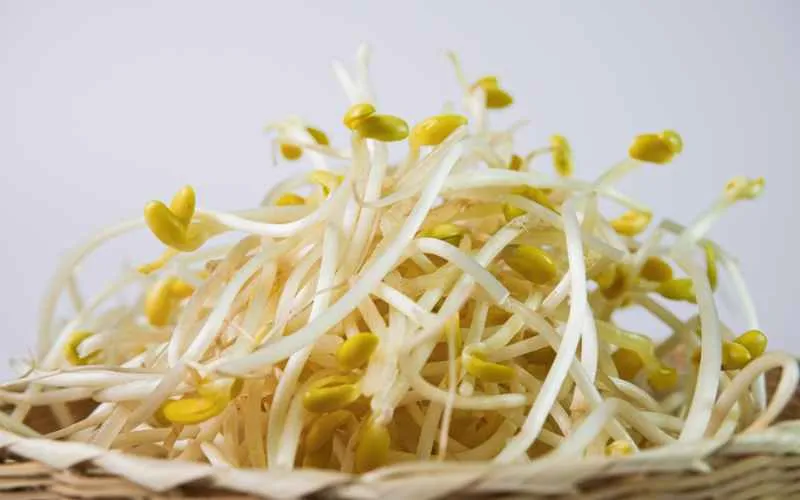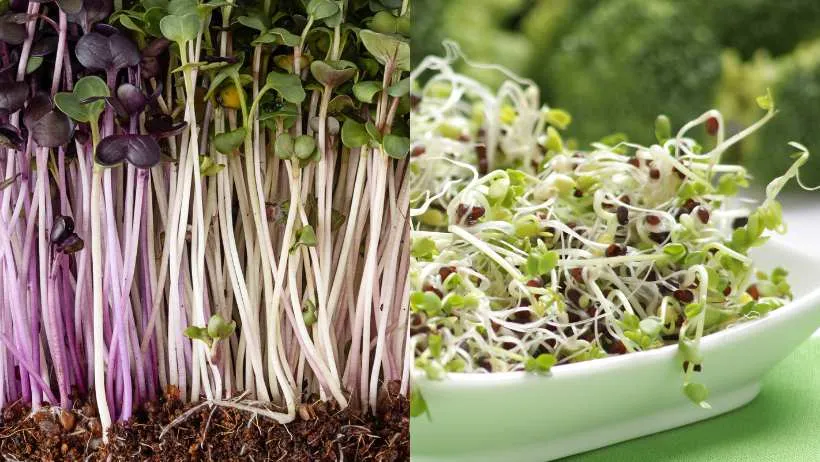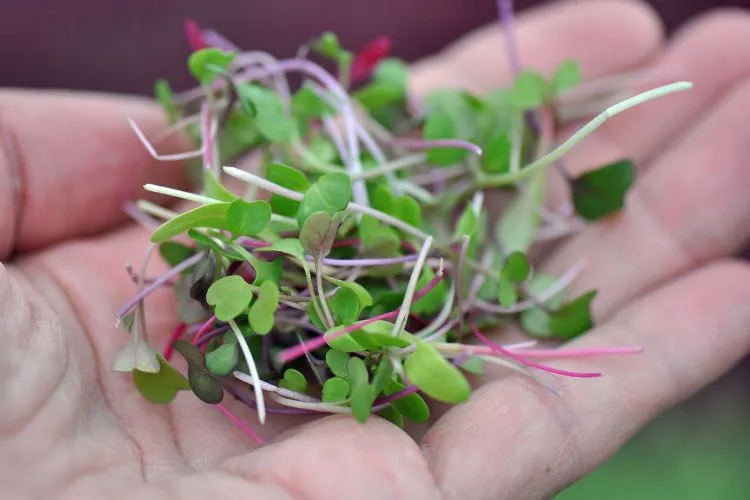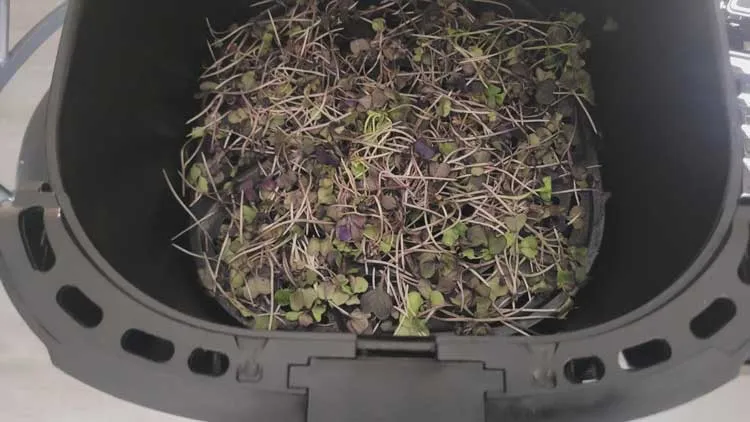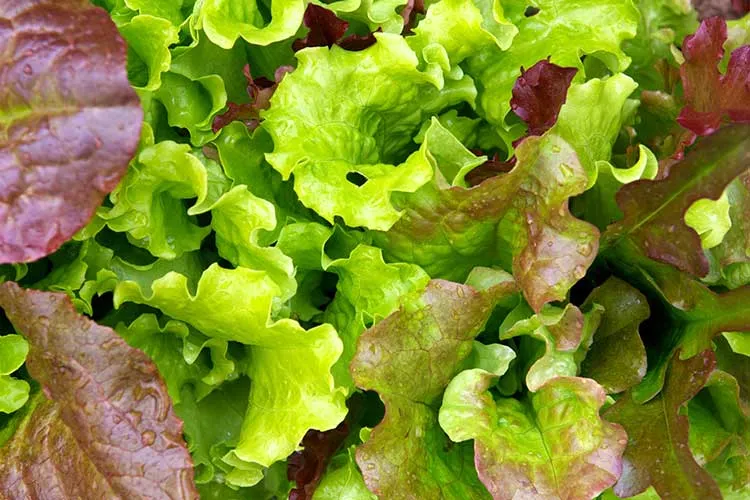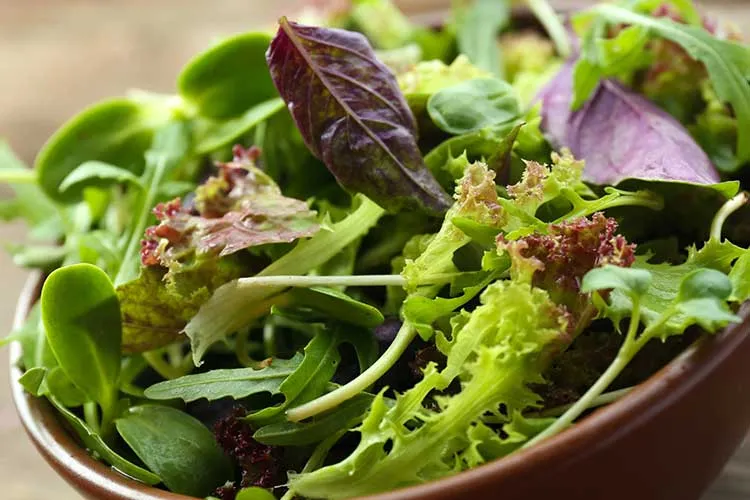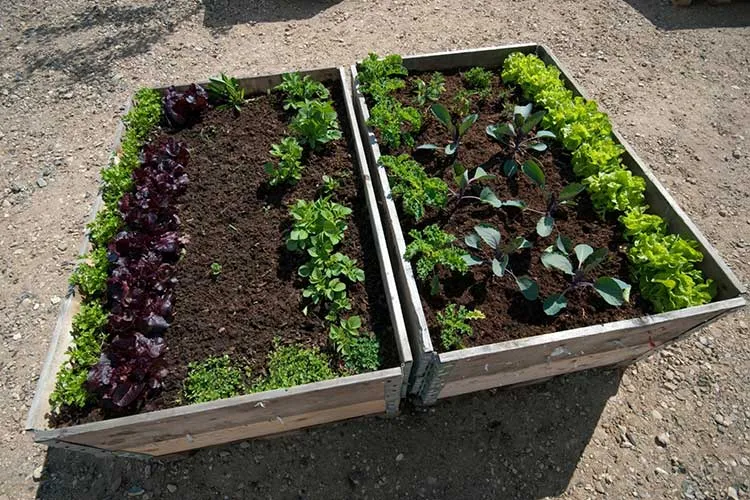Broccoli sprouts turning yellow can be alarming, but it’s often a normal part of their growth. When first sprouting, they lack chlorophyll, appearing pale or yellow. Exposure to light triggers chlorophyll production, turning them green. However, other factors like poor lighting, overcrowding, and improper watering can also cause persistent yellowing.
If sprouts remain weak, fail to green up or show signs of spoilage, it may indicate deeper issues. Understanding the natural growth process and how to troubleshoot yellowing ensures healthy, nutrient-rich sprouts.
This guide breaks down each stage of development, common causes of discoloration, and how to keep sprouts thriving. If you’re struggling with yellow sprouts, you’ll find the answers here.
Why do Broccoli Sprouts Turn Yellow?
Chlorophyll is responsible for plants’ green color, allowing them to absorb sunlight and produce energy through photosynthesis. In mature plants, chlorophyll is abundant in leaves, helping convert light into the sugars needed for growth. However, when broccoli sprouts first emerge, they often appear pale yellow. This is because they have not yet been exposed to light, and their chlorophyll production remains inactive. Seeds rely on stored nutrients for early growth, so there is no immediate need for photosynthesis.
As soon as sprouts are exposed to light, chlorophyll production begins. Under the right conditions, the transition from yellow to green can happen within hours. Natural sunlight provides a full spectrum of light, ideal for chlorophyll development. Artificial lighting, such as LED or fluorescent grow lights, can stimulate greening.
However, results may vary depending on the light’s intensity and spectrum. If sprouts receive insufficient light, they may remain yellow and grow weak. A bright, indirect light source usually provides the best balance for healthy development without overheating or drying out the sprouts. For those looking to speed up the growing process, check out how to grow broccoli sprouts fast.
Normal Yellowing During Growth
As broccoli sprouts develop, they transition from relying on stored nutrients within the seed to absorbing nutrients through their emerging roots. During this shift, parts of the sprout that served a temporary function began to degrade, including the cotyledons. These are the first small leaves that emerge from the seed, supplying energy before true leaves develop. Since their role is short-lived, they naturally turn yellow and fall off as the sprout matures.
This yellowing is a normal part of growth and does not indicate a problem. Many other sprouting plants, such as radish sprouts, alfalfa, and mustard sprouts, undergo a similar process. In all cases, cotyledons provide an initial energy source but are not meant to last. As long as the main leaves of the sprout remain green and healthy, there is no cause for concern.
Growth Stages of Broccoli Sprouts
Germination Stage begins when the seed absorbs water, causing it to swell and break open. This triggers metabolic activity, allowing the root (radicle) to emerge. At this stage, the sprout depends entirely on the nutrients stored in the seed, and chlorophyll has not yet developed. Temperature and humidity play a key role, with optimal conditions around 65–75°F (18–24°C) and consistent moisture. Without these factors, germination may be slow or uneven.
Seedling Stage—As the sprout grows, it begins developing its first small leaves, cotyledons. Light exposure becomes essential, signaling the plant to produce chlorophyll, which turns the once-yellow sprout green. Without enough light, seedlings may stay pale and weak. At this point, the roots also start absorbing nutrients from water, making proper hydration important.
Vegetative Stage – Growth accelerates as the sprout strengthens. True leaves begin forming, distinguishing the sprout from its early seedling stage. The roots extend deeper into the growing medium, increasing nutrient absorption. Sprouts will grow rapidly and become vibrant green if given proper spacing, light, and moisture.
Harvest Stage— Broccoli sprouts are typically ready to eat within 4–6 days. They have reached their peak nutritional content, containing high levels of sulforaphane, a beneficial compound known for its health benefits. The sprouts should be bright green with crisp, tender stems. They may continue to grow if left longer, but their texture and flavor will change.
Other Reasons Your Sprouts Might Be Yellow
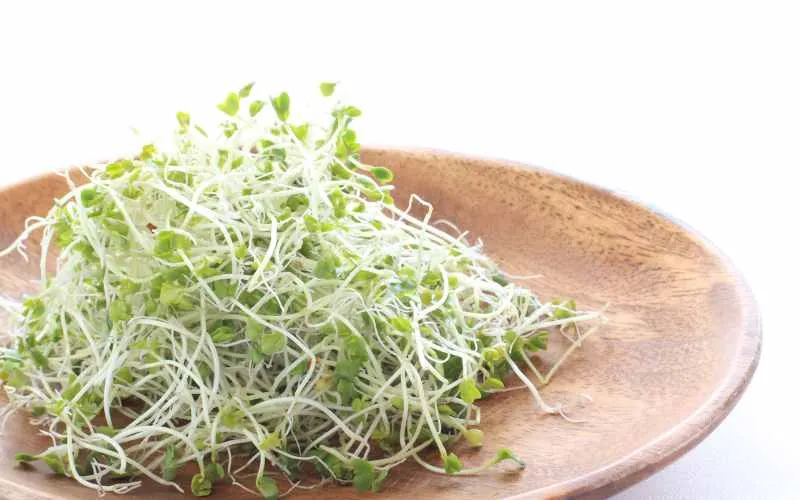
Insufficient Light – Without enough light, broccoli sprouts cannot produce chlorophyll, leaving them yellow and weak. Even brief exposure to bright, indirect sunlight or a full-spectrum grow light can trigger greening. If sprouts remain yellow despite proper care, the light source may be too dim or too far away.
Overcrowding—If too many seeds are packed into a small growing space, airflow is restricted, and sprouts compete for light and nutrients. This can cause stress, leading to yellowing and weak growth. You should spread your sprouts evenly and gently stir them daily to improve air circulation.
Watering Issues – Both overwatering and underwatering can result in yellow sprouts. Too much water leads to poor oxygen availability, weakening the roots and increasing the risk of mold. Too little water slows nutrient absorption, causing stress and discoloration. The goal is to keep sprouts consistently moist but not soaked, draining any excess water after rinsing.
How to Tell if Broccoli Sprouts Have Gone Bad
Spoiled broccoli sprouts often develop a slimy texture, an unpleasant odor, or visible mold. Fresh sprouts should feel crisp and smell mildly earthy. Discard them if they become sticky or have a sour or rotten smell. Mold, which appears as fuzzy white, green, or black spots, is another clear sign of spoilage and should not be ignored.
Yellowing alone does not always mean sprouts have gone bad. They are likely safe to eat if they still smell fresh and have a firm texture. However, suppose yellowing is accompanied by wilting, excessive moisture, or any of the abovementioned signs. In that case, they may be past their prime.
To keep sprouts fresh longer, store them in an airtight container lined with a dry paper towel to absorb excess moisture. They should be kept in the refrigerator and consumed within 4–6 days for the best quality. Rinsing them daily and draining them thoroughly before storage can help prevent bacterial growth.
Tips for Growing Healthy Broccoli Sprouts
Ideal Lighting Conditions – Light exposure is essential for turning sprouts green and keeping them healthy. Indirect sunlight or a full-spectrum grow light for a few hours daily encourages chlorophyll production without overheating the sprouts. Avoid direct sunlight, as it can dry them out too quickly.
Proper Spacing – Overcrowding leads to poor air circulation and excess moisture buildup, which increases the risk of mold and weak, yellow sprouts. Spread seeds evenly in the growing container and gently shake or stir them daily to promote airflow.
Watering Techniques – Rinse sprouts twice daily with clean water, ensuring all excess water drains completely. Too much moisture encourages mold, while too little can cause stunted growth. A well-ventilated container with proper drainage helps maintain the right balance.
How Long Does It Take for Broccoli Sprouts to Grow?
Broccoli sprouts typically take 4–6 days to reach the edible stage. During this time, they undergo rapid changes, from germination to seedling development. On day one, the seeds absorb water and begin sprouting. By day two or three, small roots and cotyledons appear. By day four or five, the sprouts turn green with proper light exposure, and by day six, they are usually ready for harvest.
Growth speed depends on environmental factors. Temperature between 65–75°F (18–24°C) promotes steady sprouting, while cooler conditions slow the process. Humidity should be moderate to prevent drying out or mold formation. Light exposure is key for greening, but excessive heat from direct sunlight can damage sprouts.
If sprouts grow slowly or appear weak, check for low temperatures, insufficient moisture, or poor air circulation. Adjusting these factors can help ensure strong, healthy growth. If you want to try other sprouts, look at the best sprouts to grow.
For those looking to speed up the growing process, check out how to grow broccoli sprouts fast.

